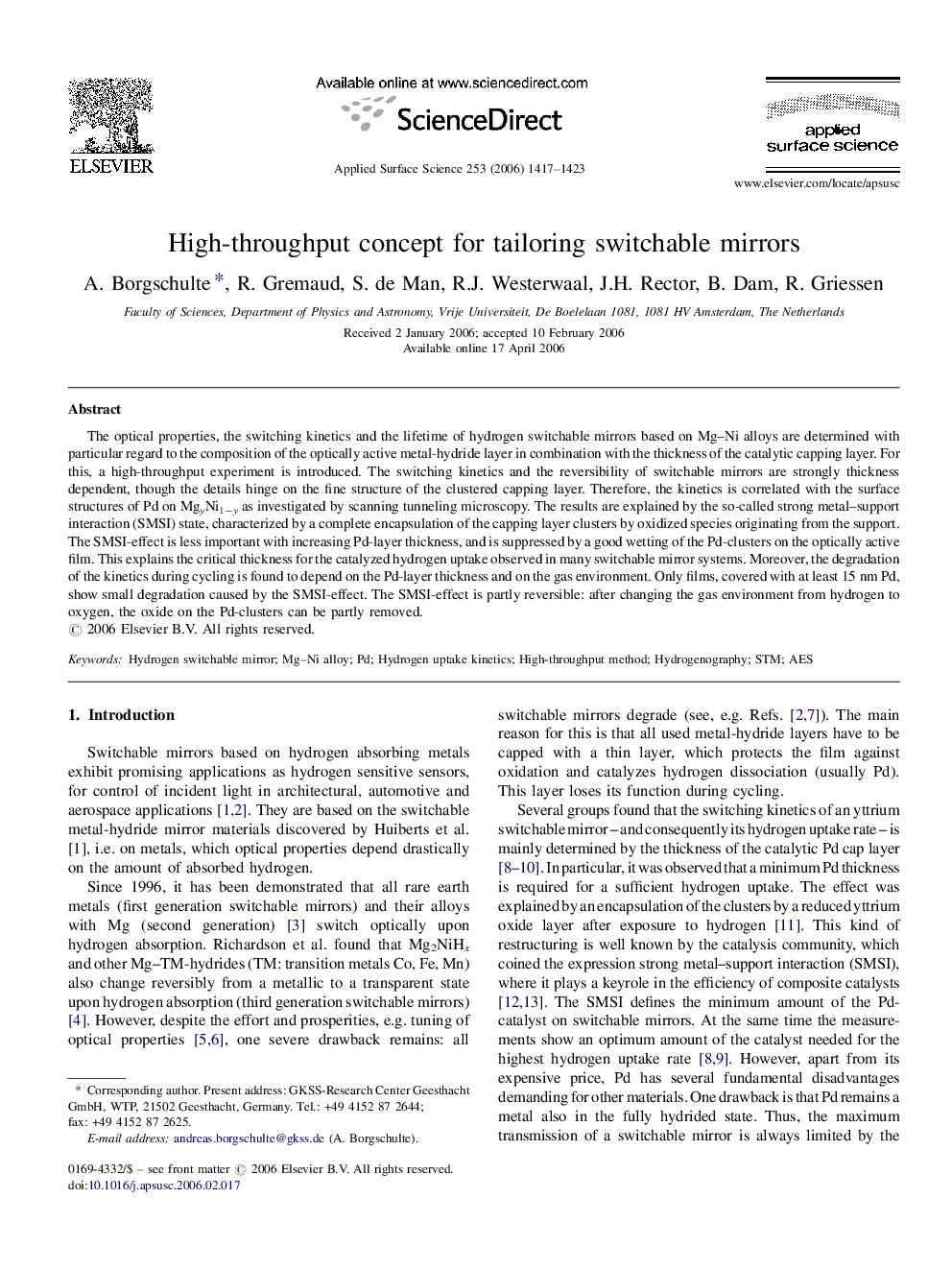| Article ID | Journal | Published Year | Pages | File Type |
|---|---|---|---|---|
| 5370164 | Applied Surface Science | 2006 | 7 Pages |
The optical properties, the switching kinetics and the lifetime of hydrogen switchable mirrors based on Mg-Ni alloys are determined with particular regard to the composition of the optically active metal-hydride layer in combination with the thickness of the catalytic capping layer. For this, a high-throughput experiment is introduced. The switching kinetics and the reversibility of switchable mirrors are strongly thickness dependent, though the details hinge on the fine structure of the clustered capping layer. Therefore, the kinetics is correlated with the surface structures of Pd on MgyNi1ây as investigated by scanning tunneling microscopy. The results are explained by the so-called strong metal-support interaction (SMSI) state, characterized by a complete encapsulation of the capping layer clusters by oxidized species originating from the support. The SMSI-effect is less important with increasing Pd-layer thickness, and is suppressed by a good wetting of the Pd-clusters on the optically active film. This explains the critical thickness for the catalyzed hydrogen uptake observed in many switchable mirror systems. Moreover, the degradation of the kinetics during cycling is found to depend on the Pd-layer thickness and on the gas environment. Only films, covered with at least 15Â nm Pd, show small degradation caused by the SMSI-effect. The SMSI-effect is partly reversible: after changing the gas environment from hydrogen to oxygen, the oxide on the Pd-clusters can be partly removed.
